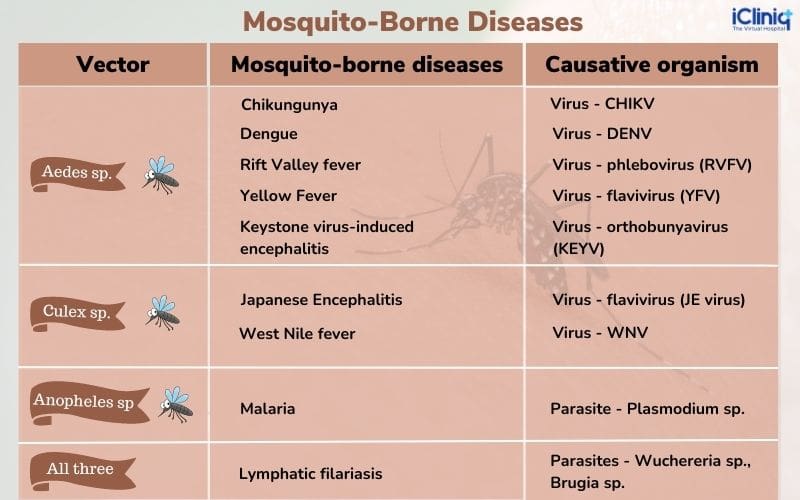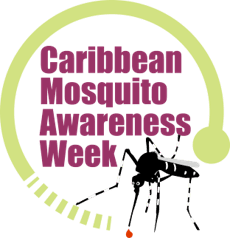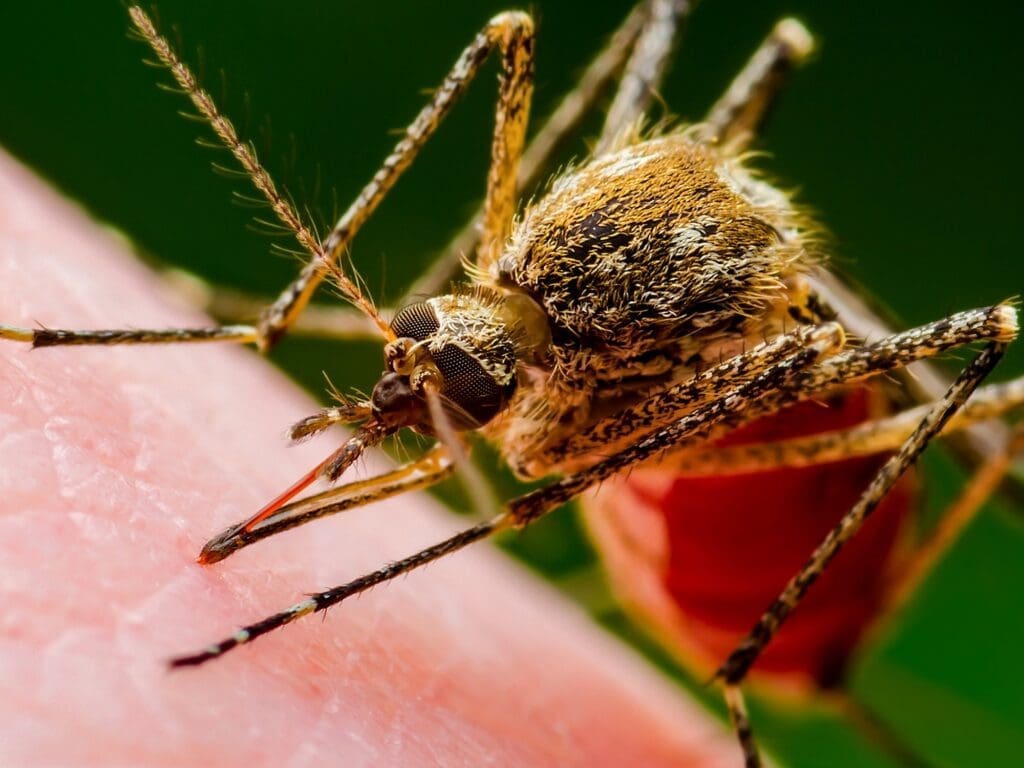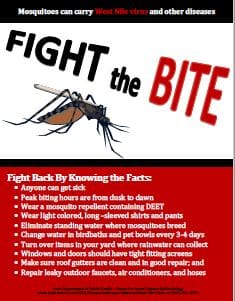Picture yourself on a warm summer evening, enjoying a beautiful sunset and the gentle breezes. But suddenly, you hear the familiar buzz of a mosquito nearby. While irritating, this annoyance is just a fraction of the bigger battle that humanity has been fighting against mosquito-borne diseases for centuries. In this article, we will explore the relentless efforts made to combat these diseases, the innovative solutions developed over time, and how you can protect yourself from these tiny but formidable adversaries. Get ready to join the battle against mosquito-borne diseases!

1. Understanding Mosquito-Borne Diseases
1.1 What are mosquito-borne diseases?
Mosquito-borne diseases are infectious diseases that are transmitted to humans and animals through the bite of infected mosquitoes. These diseases occur when a mosquito bites an infected person or animal, ingests the pathogens present in their blood, and then transmits the pathogens to a new host during subsequent blood meals. Mosquitoes act as vectors, or carriers, of various diseases, making them a significant threat to public health.
1.2 Common mosquito-borne diseases
There are several common mosquito-borne diseases that affect millions of people worldwide. Malaria, caused by the Plasmodium parasite, is one of the most well-known and deadliest mosquito-borne diseases, particularly prevalent in tropical and subtropical regions. Other notable diseases include dengue fever, Zika virus, yellow fever, West Nile virus, and chikungunya. These diseases can cause a range of symptoms from mild to severe, and in some cases, may even lead to death.
1.3 Impact and consequences of mosquito-borne diseases
Mosquito-borne diseases have a significant impact on individuals, communities, and entire countries. They can cause long-term health issues, such as neurological complications, organ damage, and developmental disorders. The economic burden of these diseases is also substantial, as they often affect regions with limited healthcare resources, leading to increased medical costs and decreased productivity. Additionally, mosquito-borne diseases can hinder societal development, disrupt tourism, and pose a threat to global security if not effectively managed.
2. Mosquitoes as Disease Vectors
2.1 Mosquito life cycle
To understand how mosquitoes become disease vectors, it is essential to comprehend their life cycle. Mosquitoes undergo a four-stage life cycle, starting with eggs laid in water. These eggs hatch into larvae, commonly known as wigglers, which live in water and feed on organic matter. The larvae then develop into pupae, also called tumblers, during which they transform into adult mosquitoes. Finally, the adult mosquitoes emerge, ready to mate and continue the cycle. The female mosquitoes are the ones responsible for transmitting diseases, as they require a blood meal for egg production.
2.2 Female mosquitoes as disease carriers
Female mosquitoes play a crucial role in the transmission of mosquito-borne diseases. Unlike male mosquitoes that primarily feed on nectar, females require blood to obtain the necessary nutrients for egg development. When a female mosquito feeds on a person or animal infected with a disease-causing pathogen, such as a virus or parasite, the pathogen enters her bloodstream. The pathogens then replicate within the mosquito’s body, eventually making their way to the salivary glands. Once the mosquito bites a new host, she injects saliva containing the pathogens, thus transmitting the disease.
2.3 How mosquitoes transmit diseases
Mosquitoes transmit diseases through their biting behavior. When a mosquito bites an infected individual, it introduces the disease-causing pathogens into its body. These pathogens can be viruses, parasites, or bacteria. As the pathogens replicate within the mosquito, they migrate to the salivary glands. When the mosquito bites a new host, it injects saliva containing the pathogens into the bloodstream. The pathogens can then infect the new host, leading to the development of the disease. It is crucial to note that different mosquito species transmit specific diseases, and the geographical distribution of these mosquitoes often determines the prevalence of certain diseases.

3. Global Impact of Mosquito-Borne Diseases
3.1 Mosquito-borne diseases around the world
Mosquito-borne diseases are a global health concern, affecting various regions worldwide. Malaria, for example, is endemic to many countries in Africa, Asia, and Latin America, causing significant morbidity and mortality. Dengue fever is prevalent in tropical and subtropical regions, including Southeast Asia, the Caribbean, and parts of South America. Zika virus, previously limited to certain areas, gained global attention during the 2015-2016 outbreak, primarily affecting the Americas and some Pacific islands. West Nile virus is common in North America, while yellow fever is endemic to parts of Africa and South America. Chikungunya is widespread in Africa, Asia, and the Americas.
3.2 Economical and societal impact
Mosquito-borne diseases have substantial economic and societal consequences. Outbreaks of these diseases can lead to increased healthcare costs, reduced productivity, and economic losses in affected regions. The treatment and management of these diseases, including vector control efforts, require significant financial resources. Tourism, a vital sector in many countries, can be severely impacted by mosquito-borne diseases, with travelers avoiding areas with high disease prevalence. Additionally, the burden on healthcare systems and the resulting strain on available resources can hinder overall societal development in affected regions.
3.3 Implications for public health
Mosquito-borne diseases pose significant challenges to public health. The risk of widespread transmission and outbreaks necessitates proactive and coordinated efforts by governments, international organizations, and communities. Long-term consequences of these diseases, such as complications in pregnancy, neurological disorders, and chronic health problems, further underscore the need for efficient prevention, control, and treatment strategies. Public health measures, including surveillance, education, and access to healthcare, are crucial in minimizing the impact of these diseases on populations.
4. Prevention is Key
4.1 Eliminating breeding grounds
Preventing mosquito breeding is a crucial step in controlling mosquito-borne diseases. Mosquitoes lay their eggs in standing water, so removing stagnant water sources around homes and communities is essential. Emptying containers, such as flowerpots, buckets, and old tires, that collect water can significantly reduce mosquito populations. Regularly cleaning and maintaining gutters, birdbaths, and outdoor containers can also help eliminate potential breeding grounds.
4.2 Use of mosquito repellents
Mosquito repellents are an effective tool to protect against mosquito bites and the diseases they carry. Applying repellents containing registered active ingredients, such as DEET, picaridin, or IR3535, can provide long-lasting protection. It is important to follow the product instructions, especially when applying repellents to children and infants. Wearing repellent-treated clothing and using mosquito nets during outdoor activities can also enhance personal protection.
4.3 Protective clothing
Wearing appropriate clothing can serve as a physical barrier against mosquito bites. Clothing that covers the arms, legs, and feet can reduce the exposed skin area, minimizing the chances of mosquito contact. Opting for light-colored clothing may also help as mosquitoes are attracted to dark colors. Additionally, treating clothing with permethrin, an insecticide that repels and kills mosquitoes, can provide additional protection.
4.4 Mosquito nets and screens
Using mosquito nets while sleeping is an effective preventive measure, especially in areas with high malaria transmission. Bed nets, treated with insecticides like permethrin or deltamethrin, can provide a physical barrier against mosquitoes and kill them upon contact. Window and door screens can also help keep mosquitoes out of homes, providing a mosquito-free environment.
4.5 Vaccination and medication
Vaccination and medication play a crucial role in preventing and managing mosquito-borne diseases. Vaccines, such as those available for yellow fever and Japanese encephalitis, provide a long-term defense against specific diseases. Antimalarial drugs, like chloroquine and artemisinin-based combination therapies, are used for malaria prevention and treatment. It is important to consult healthcare professionals or travel medicine specialists for guidance on specific vaccines and medications based on individual travel plans and medical history.

5. Integrated Pest Management
5.1 Integrated approach to mosquito control
Integrated Pest Management (IPM) is a comprehensive and environmentally friendly approach to mosquito control. It combines multiple strategies to manage mosquitoes effectively while minimizing the use of chemical pesticides. IPM involves surveillance, source reduction, biological control, and targeted pesticide application when necessary. By integrating different methods, IPM aims to reduce mosquito populations and prevent the spread of mosquito-borne diseases.
5.2 Targeted spraying and larviciding
Targeted spraying is a method used to control adult mosquitoes in specific areas. It involves applying insecticides only in areas with high mosquito activity or disease prevalence. Larviciding, on the other hand, focuses on treating mosquito breeding sites with larvicides to kill mosquito larvae before they become adults. By targeting specific areas and life stages of mosquitoes, these methods can effectively reduce mosquito populations without widespread pesticide use.
5.3 Biological control methods
Biological control methods utilize natural enemies of mosquitoes to control their populations. This can include the introduction of mosquito-eating fish into water bodies or the use of bacteria, such as Bacillus thuringiensis israelensis (Bti), which specifically target mosquito larvae. By harnessing the power of natural predators and pathogens, biological control methods provide a sustainable and environmentally friendly alternative to chemical pesticides.
5.4 Community involvement
Effective mosquito control requires community participation and engagement. Communities can play a vital role in eliminating breeding sites by regularly inspecting their surroundings and taking necessary actions. Education campaigns, workshops, and training programs can empower individuals to take proactive measures against mosquitoes. By fostering community ownership and participation, mosquito control efforts can be more efficient and sustainable.
6. Innovative Technologies in Mosquito Control
6.1 Sterile insect technique
The sterile insect technique (SIT) is an innovative method used to control mosquito populations. It involves the mass rearing of male mosquitoes, which are sterilized using radiation. The sterile male mosquitoes are then released into the wild, where they compete with wild males for mating with female mosquitoes. As the sterile males are unable to produce offspring, the wild mosquito population gradually decreases. SIT has been successfully used to control mosquito-borne diseases like dengue fever and Zika virus.
6.2 Genetic modification of mosquitoes
Genetic modification of mosquitoes is a cutting-edge technology that aims to reduce mosquito populations and disease transmission. By introducing genetic modifications into the mosquito’s genome, scientists can create mosquitoes that are incapable of transmitting diseases or are more susceptible to control measures. One example is the development of genetically modified mosquitoes carrying a gene that causes the offspring to die before reaching adulthood. These innovative techniques hold promise for future mosquito control strategies.
6.3 Mosquito traps and monitoring devices
Mosquito traps and monitoring devices are valuable tools in mosquito control efforts. These devices use attractants, such as carbon dioxide or specific odors, to lure mosquitoes into traps. Once inside, the mosquitoes are trapped and unable to escape. Some traps also incorporate methods to kill mosquitoes, such as the use of insecticides or dehydration. Monitoring devices, including mosquito surveillance systems and trap counts, provide valuable data for assessing mosquito populations and planning control measures.
6.4 Misting systems and fogging
misting systems and fogging involve the application of insecticides as fine mists or fog, killing adult mosquitoes on contact. Misting systems are pre-installed devices that release insecticides at scheduled intervals, primarily in outdoor spaces. Fogging, on the other hand, involves the use of specialized equipment to disperse insecticides as a fog in targeted areas. These methods are often employed for rapid reduction of mosquito populations during outbreaks or in high-risk areas.
6.5 Drones for mosquito control
Drones are increasingly being used for mosquito control and surveillance purposes. Equipped with specialized sensors and cameras, these unmanned aerial vehicles can detect and monitor mosquito breeding sites, allowing for targeted interventions. Drones can also be used to spray larvicides or insecticides in hard-to-reach areas, reducing the reliance on manual labor and improving the efficiency of mosquito control operations.

7. The Role of Government and Organizations
7.1 Government strategies and policies
Governments play a crucial role in addressing mosquito-borne diseases by implementing strategies and policies for effective control. This includes allocating resources for surveillance, research, and capacity building. Governments also establish regulations regarding mosquito control measures, pesticide use, and public health interventions. By prioritizing public health and supporting coordinated efforts, governments can mitigate the impact of mosquito-borne diseases on their populations.
7.2 International organizations addressing mosquito-borne diseases
International organizations, such as the World Health Organization (WHO) and the United Nations Children’s Fund (UNICEF), are at the forefront of global efforts to combat mosquito-borne diseases. These organizations provide technical guidance, funding, and support to countries facing significant disease burdens. They also coordinate collaborative initiatives, conduct research, and promote best practices for mosquito control. Through their efforts, international organizations aim to reduce the global burden of mosquito-borne diseases.
7.3 Collaborative efforts and funding
Collaboration among governments, international organizations, researchers, and non-governmental organizations (NGOs) is essential for addressing mosquito-borne diseases comprehensively. By pooling resources, expertise, and technology, these collaborations can foster innovation, research, and the implementation of effective control strategies. Funding plays a vital role in supporting these collaborative efforts, enabling the development and implementation of mosquito control programs and initiatives.
8. Research and Development
8.1 Advancements in understanding mosquito biology
Research on mosquito biology is crucial for advancing our understanding of mosquito-borne diseases and developing effective control strategies. Scientists study various aspects of mosquito biology, including their behavior, physiology, and genetics. This research helps identify vulnerabilities and weaknesses in the mosquito life cycle, allowing for targeted interventions. Advancements in understanding mosquito biology also aid in the development of repellents, traps, and genetic modification techniques.
8.2 Developing new control methods
Ongoing research and development efforts aim to develop new and improved methods for mosquito control. This includes the exploration of alternative insecticides, biological control agents, and innovative technologies. Researchers are also investigating new approaches to interrupt disease transmission, such as the use of Wolbachia bacteria, which can prevent mosquitoes from transmitting certain diseases. By continuously improving control methods, scientists hope to reduce the global burden of mosquito-borne diseases.
8.3 Vaccine development and effectiveness
Vaccine development is a crucial area of research for mosquito-borne diseases. Vaccines provide a proactive approach to disease prevention by stimulating the immune system to recognize and fight specific pathogens. Scientists are working on developing vaccines for diseases like malaria, dengue fever, and Zika virus. The effectiveness of vaccines is evaluated through rigorous clinical trials, ensuring their safety and efficacy. Continued research and development in this field hold the potential to revolutionize mosquito-borne disease prevention.
8.4 Future prospects in mosquito control
The future of mosquito control holds promise with advancements in technology, innovative approaches, and global collaborations. Research on novel control methods, such as gene drives, which alter the genetic composition of mosquito populations, could provide effective and sustainable solutions. Additionally, increased focus on community engagement, education, and public health infrastructure can contribute to long-term success in mosquito control. Continued investment in research and development will shape the future of mosquito-borne disease prevention.

9. Community Education and Awareness
9.1 Educating communities on mosquito-borne diseases
Community education plays a vital role in raising awareness about mosquito-borne diseases and their prevention. Educational campaigns can provide information on disease symptoms, transmission risks, and available preventive measures. By increasing knowledge and understanding, communities can make informed decisions regarding personal protection and participate in mosquito control efforts. Educational materials, including brochures, posters, and online resources, can be distributed in schools, healthcare facilities, and community centers.
9.2 Promoting preventive measures
Promoting preventive measures is crucial in reducing the impact of mosquito-borne diseases. Communities should be encouraged to actively engage in preventive actions, such as eliminating breeding sites and using repellents. Media campaigns can disseminate information on preventive measures, highlighting their effectiveness and importance. Engaging healthcare professionals, community leaders, and influencers can help amplify the message and encourage behavior change within communities.
9.3 Engaging schools and educational institutions
Schools and educational institutions play a vital role in educating children and young people about mosquito-borne diseases. Integrating mosquito control and disease prevention topics into the curriculum can help build awareness from an early age. Involving students in projects related to mosquito surveillance, larval control, and community outreach activities can foster a sense of responsibility and actively involve them in mosquito control efforts. Engaging educational institutions as partners can have a significant impact on creating a mosquito-aware generation.
9.4 Media campaigns and awareness programs
Media campaigns and awareness programs play a crucial role in reaching a wide audience and mobilizing communities for mosquito control. Utilizing various media platforms, such as television, radio, social media, and print media, can effectively disseminate information on mosquito-borne diseases and preventive measures. Partnering with local organizations, celebrities, and influencers can enhance the reach and impact of these campaigns. Interactive events, workshops, and community dialogues can further facilitate knowledge sharing and behavior change.
10. The Future of Mosquito Control
10.1 Emerging technologies and innovations
The future of mosquito control is promising with emerging technologies and innovations. Advances in genetic modification and gene editing techniques may allow for the development of mosquitoes that cannot transmit diseases. Novel insecticides and repellents with improved efficacy and safety profiles are also being developed. In addition, the use of artificial intelligence, robotics and automated systems can enhance surveillance, monitoring, and control efforts. The integration of these technologies will shape the future of mosquito control.
10.2 Global initiatives and cooperation
Global initiatives and cooperation are pivotal in addressing mosquito-borne diseases at a global scale. Collaborative efforts between countries, international organizations, researchers, and private sector entities can facilitate the exchange of knowledge, resources, and best practices. Networks and platforms dedicated to the control of specific diseases, such as the Global Malaria Programme and the Global Dengue and Aedes-transmitted Diseases Consortium, are actively working to combat mosquito-borne diseases globally. Continued collaboration and cooperation will be essential to leverage collective strengths and effectively tackle these diseases.
10.3 Long-term strategies for mosquito control
Adopting long-term strategies is crucial for sustainable mosquito control. These strategies should focus on enhancing surveillance, building robust public health systems, and strengthening vector control capacities. Infrastructure development, such as better sanitation and waste management, can contribute to reducing mosquito breeding sites. Investments in research and development, education, and community engagement should also be prioritized. By implementing holistic and integrated approaches, long-term strategies can help alleviate the burden of mosquito-borne diseases and promote global health security.
In conclusion, mosquito-borne diseases pose significant challenges to public health, societal development, and global security. Understanding the biology and behavior of mosquitoes, implementing integrated pest management approaches, and embracing innovative technologies are crucial steps towards effective mosquito control. Government strategies, international collaborations, research and development efforts, community education, and awareness play an essential role in combating these diseases. With continued commitment and investment, the future of mosquito control holds promise for a world with reduced mosquito-borne disease burden and improved public health.

I am Randy, the author behind PestControld.com. Drawing from decades of experience, I aim to provide valuable insights, expert advice, and practical recommendations to help you make informed decisions when assessing viable pest control solutions.